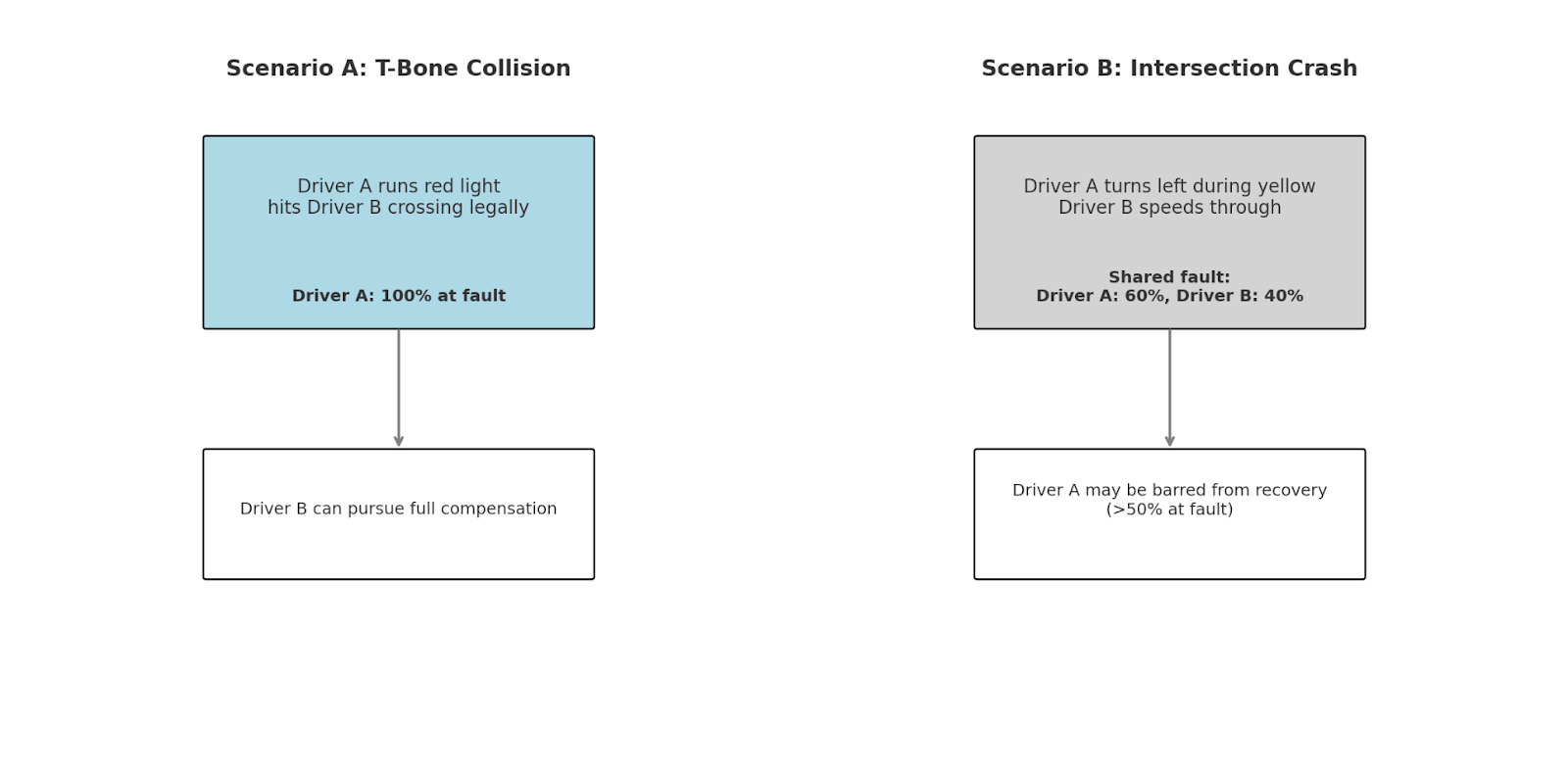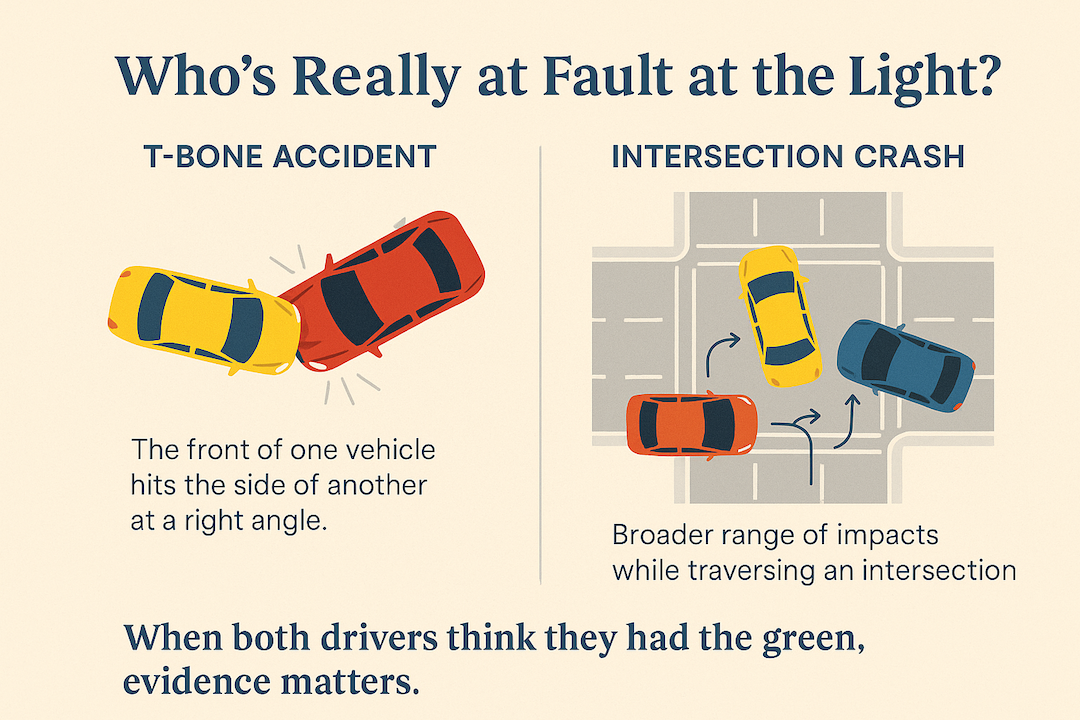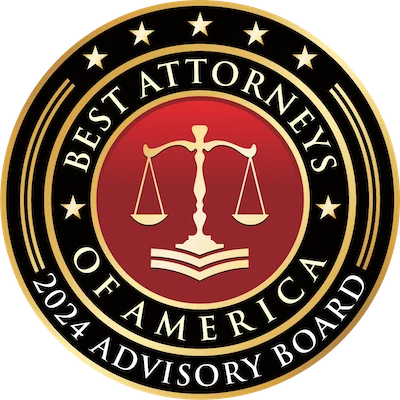Side-impact crashes happen in a split second, but figuring out who’s at fault can take weeks or even months. Whether you’re hit while crossing an intersection or making a left turn, the legal path forward depends on a variety of factors, from traffic signals to Florida’s updated negligence laws.
In this guide, we’ll walk you through the differences between T-bone and general intersection crashes, explain how liability is determined, and offer practical steps to protect your legal rights after a collision.
What Is a T-Bone Accident?
A T-bone accident occurs when the front of one vehicle strikes the side of another, forming a “T” shape on impact. These crashes almost always happen in intersections and are typically caused by:
- Running red lights or stop signs
- Failing to yield
- Distracted or impaired driving
- Speeding through yellow lights
Because the struck vehicle absorbs the force directly on its side, where there’s less structural protection, T-bone accidents often lead to serious injuries for passengers and drivers alike.
How T-Bone Crashes Differ from Other Intersection Accidents
While every T-bone accident happens at an intersection, not all intersection crashes are T-bones. Other types of intersection accidents include:
- Left-turn collisions
- Head-on crashes at four-way stops
- Rear-end collisions while waiting to turn or merge
- Multi-car pileups caused by a chain reaction of impacts
T-bones tend to offer clearer visual evidence (like side-panel damage), but that doesn’t always mean liability is simple. That’s where Florida’s comparative negligence law comes into play.
Florida’s Modified Comparative Negligence Law
As of 2023, Florida follows a modified comparative negligence system. Under this rule:
If you are more than 50% at fault, you cannot recover damages from the other driver.
This change, introduced under HB 837, has a direct impact on intersection crashes, where multiple drivers often share responsibility. Your compensation may be reduced based on your level of fault, making it even more important to establish accurate liability.
Real-World Scenarios: T-Bone vs. Intersection Crash
Scenario A: T-Bone Collision
Driver A runs a red light and crashes into the side of Driver B’s vehicle crossing legally on green.
* Driver A is likely 100% at fault.
Scenario B: Intersection Crash (Left Turn)
Driver A turns left during a flashing yellow arrow. Driver B is going straight through the intersection and crashes into Driver A.
* Investigation reveals Driver B was speeding.
* Both drivers may share fault: Driver A for turning into oncoming traffic, Driver B for excessive speed.
In such cases, fault percentages are key. If Driver A is found 60% at fault, they may not recover damages, but Driver B could recover 40% of their losses.

Determining Fault: What Matters Most
Insurance adjusters, lawyers, and courts typically look at the following factors:
- Traffic signal data and right-of-way rules
- Intersection camera footage
- Eyewitness statements
- Skid marks and vehicle damage patterns
- Police reports and citations issued
However, these elements can be incomplete or contested. In many T-bone crashes, both drivers claim they had the green light. That’s why legal support can make a difference in proving your side of the story.
What to Do After an Intersection Crash
If you’re involved in a T-bone or intersection collision, here’s what to do:
- Call 911 and report the accident.
Request that officers document any witness statements and signal violations. - Seek medical attention.
Side-impact crashes can cause serious internal injuries that aren’t immediately visible. - Take photos.
Include vehicle positions, damage patterns, nearby traffic signals, and license plates. - Avoid speaking to insurers before consulting an attorney.
Insurance adjusters may try to assign blame quickly to limit payouts. - Request intersection camera footage.
If available, this can provide objective evidence of fault.
For more on multi-car crashes, read: Who Is Responsible in Multi-Car Pileups?
How a Lawyer Can Help After a Side-Impact Crash
Because so much of the outcome depends on who’s believed to have the right of way, these cases often require detailed legal investigation. At Silver Injury Law, we:
- Reconstruct the accident using scene evidence and expert analysis
- Challenge biased insurance determinations
- Protect your right to compensation if the other driver was partially or fully at fault
Even if your case involves shared liability, we can help reduce your assigned fault percentage and maximize your recovery under Florida’s current laws.
Schedule a Free Consultation Today
If you were injured in a T-bone or intersection crash in Florida, don’t leave your case up to chance. Contact us today for a free consultation and let our legal team help you understand your rights, gather the right evidence, and fight for the compensation you deserve.




